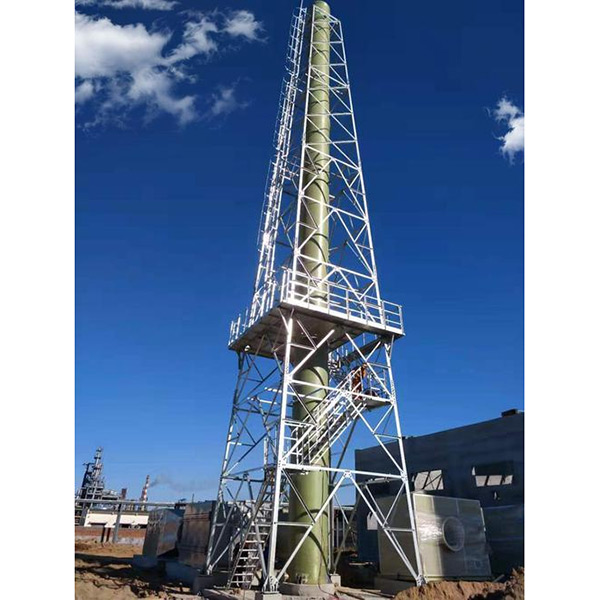Clearing the Air: Monitoring Emissions from Steel Chimneys for Environmental Compliance
2024-04-11
In the realm of steel manufacturing, where the fiery furnaces and towering chimneys shape the industrial landscape, environmental responsibility is paramount. Monitoring emissions from steel chimneys is not just a regulatory requirement; it's a crucial step towards ensuring the health of our planet and communities. Let's explore the common methods used for monitoring emissions from steel chimneys and how they contribute to environmental compliance.
Continuous Emission Monitoring Systems (CEMS):
Continuous Emission Monitoring Systems (CEMS) are sophisticated instruments installed directly on steel chimneys to continuously measure and analyze the concentration of pollutants in exhaust gases. These systems utilize advanced technologies such as gas analyzers, particulate monitors, and flow meters to quantify emissions of substances such as sulfur dioxide (SO2), nitrogen oxides (NOx), carbon monoxide (CO), and particulate matter (PM). By providing real-time data on emissions, CEMS enable steel manufacturers to track compliance with regulatory limits, identify sources of pollution, and take corrective actions as needed.
Stack Sampling and Analysis:
Stack sampling involves collecting samples of exhaust gases from steel chimneys and analyzing them in a laboratory to determine pollutant concentrations. This method may be used for periodic compliance testing or to validate the accuracy of CEMS data. Stack sampling allows for comprehensive analysis of emissions, including the identification of trace pollutants and chemical composition analysis. By comparing stack sampling results with CEMS data, steel manufacturers can ensure the reliability and accuracy of their emission monitoring systems.
Opacity Monitoring:
Opacity monitoring is a visual assessment method used to measure the density of particulate emissions from steel chimneys. It involves observing the opacity of exhaust plumes using specialized instruments called opacity monitors or opacity meters. Opacity monitoring provides a qualitative assessment of particulate emissions and can help identify sources of excessive smoke or particulate matter. While opacity monitoring does not provide quantitative data on pollutant concentrations, it serves as a valuable tool for identifying potential compliance issues and guiding corrective actions.
Calibration and Quality Assurance:
Ensuring the accuracy and reliability of emission monitoring systems is essential for maintaining compliance with environmental regulations. Calibration and quality assurance procedures are conducted regularly to verify the performance of CEMS and stack sampling equipment. This includes calibrating gas analyzers, flow meters, and other components to ensure accurate measurement of pollutant concentrations. Additionally, quality assurance measures such as audit testing and proficiency testing help validate the precision and reliability of emission monitoring data.
Data Reporting and Compliance Documentation:
Data reporting and documentation are integral components of environmental compliance for steel manufacturers. Emission monitoring data collected from steel chimneys must be accurately recorded, analyzed, and reported to regulatory authorities in accordance with applicable regulations. Detailed compliance documentation, including emission reports, calibration records, and quality assurance documentation, demonstrates a commitment to environmental stewardship and ensures transparency in regulatory compliance efforts.
Conclusion:
In the pursuit of environmental sustainability, monitoring emissions from steel chimneys plays a crucial role in ensuring compliance with regulatory standards and protecting air quality. By employing advanced technologies such as CEMS, stack sampling, and opacity monitoring, steel manufacturers can accurately quantify emissions, identify sources of pollution, and take proactive measures to mitigate environmental impact. Through rigorous calibration, quality assurance, and compliance documentation, steel manufacturers demonstrate their commitment to responsible environmental management, paving the way towards a cleaner and healthier future for all.



